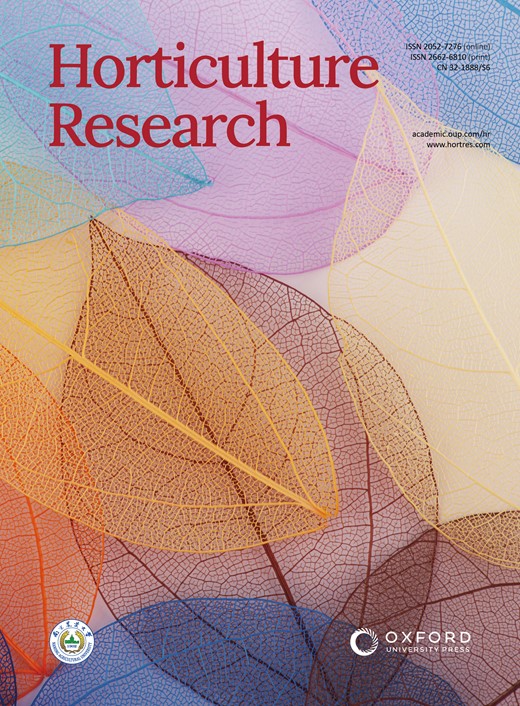叶黄素反应因子:了解肉质果实发育和成熟调控机制的重要关键
IF 8.7
1区 农林科学
Q1 Agricultural and Biological Sciences
引用次数: 0
摘要
叶绿素反应转录因子(ARFs)是一个庞大的基因家族,其中许多成员在叶绿素信号转导途径的最后一步发挥作用。ARFs 直接参与植物生长和发育的许多方面。在此,我们总结了最近在了解 ARFs 在调控肉质果实发育和成熟方面的作用方面取得的进展。ARFs在调节果实大小、颜色、营养成分、质地、产量和其他特性方面起着至关重要的作用,这些特性最终会影响番茄、苹果、草莓和桃等重要作物的成熟和品质。ARF 通过依赖或不依赖植物激素的机制对这些过程产生正向、负向或双向调节作用。在依赖植物激素的途径中,ARFs 是连接与多种植物激素相互作用的中心枢纽,可产生不同的效应。ARFs内部的三个结构域,即DNA结合结构域、中间区域和羧基末端二聚化结构域,表现出不同但重叠的功能,促成了ARFs介导的一系列机制。这些发现不仅让我们对 ARF 的功能有了深刻的了解,同时也提出了新的问题。进一步的探索将有助于更全面地了解由ARFs介导的肉质果实发育和成熟的调控机制。本文章由计算机程序翻译,如有差异,请以英文原文为准。
Auxin response factors: important keys for understanding regulatory mechanisms of fleshy fruit development and ripening
Auxin response transcription factors (ARFs) form a large gene family, many of whose members operate at the final step of the auxin signaling pathway. ARFs participate directly in many aspects of plant growth and development. Here, we summarize recent advances in understanding the roles of ARFs in regulating aspects of fleshy fruit development and ripening. ARFs play a crucial role in regulating fruit size, color, nutrients, texture, yield, and others properties that ultimately influence the ripening and quality of important crops such as tomato, apple, strawberry, and peach. ARFs impact these processes acting as positive, negative, or bidirectional regulators via phytohormone-dependent or -independent mechanisms. In the phytohormone-dependent pathway, ARFs act as a central hub linking interactions with multiple phytohormones generating diverse effects. The three domains within ARFs, namely the DNA-binding domain, the middle region, and the carboxy-terminal dimerization domain, exhibit distinct yet overlapping functions, contributing to a range of mechanisms mediated by ARFs. These findings not only provide a profound understanding of ARF functions, but also raise new questions. Further exploration can lead to a more comprehensive understanding of the regulatory mechanisms of fleshy fruit development and ripening mediated by ARFs.
求助全文
通过发布文献求助,成功后即可免费获取论文全文。
去求助
来源期刊

Horticulture Research
Biochemistry, Genetics and Molecular Biology-Biochemistry
CiteScore
11.20
自引率
6.90%
发文量
367
审稿时长
20 weeks
期刊介绍:
Horticulture Research, an open access journal affiliated with Nanjing Agricultural University, has achieved the prestigious ranking of number one in the Horticulture category of the Journal Citation Reports ™ from Clarivate, 2022. As a leading publication in the field, the journal is dedicated to disseminating original research articles, comprehensive reviews, insightful perspectives, thought-provoking comments, and valuable correspondence articles and letters to the editor. Its scope encompasses all vital aspects of horticultural plants and disciplines, such as biotechnology, breeding, cellular and molecular biology, evolution, genetics, inter-species interactions, physiology, and the origination and domestication of crops.
 求助内容:
求助内容: 应助结果提醒方式:
应助结果提醒方式:


